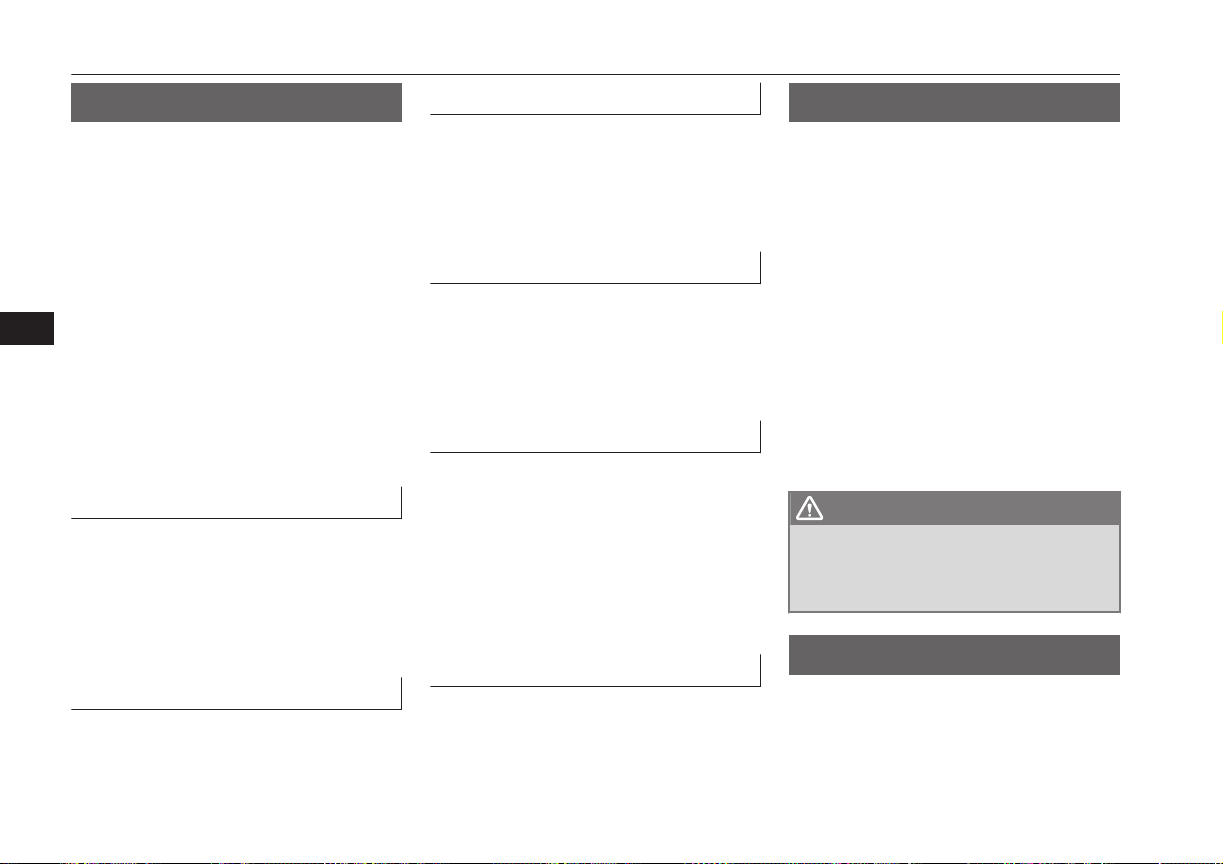Loading ...
Loading ...
Loading ...

Economical driving
E00600102220
For economical driving, there are some tech-
nical requirements that have to be met. The
prerequisite for low fuel consumption is a
properly adjusted engine. In order to achieve
longer life of the vehicle and the most eco-
nomical operation, we recommend you to
have the vehicle checked at regular intervals
in accordance with the service standards.
Fuel economy and generation of exhaust gas
and noise are highly influenced by personal
driving habits as well as the particular operat-
ing conditions. The following points should
be observed in order to minimize wear of
brakes, tyres and engine as well as to reduce
environmental pollution.
Starting and acceleration
Avoid driving when the accelerator pedal is
pushed way down, such as for unnecessarily
sudden starts, acceleration and deceleration.
Smoothly depress the accelerator pedal.
Observe the speed limit and keep the speed
as constant as possible while driving.
Idling
Parking for a long period with the ready indi-
cator illuminated will shorten the cruising
range.
Speed
The higher the vehicle speed, the more drive
battery is consumed. Avoid driving at full
speed. Even a slight release of the accelerator
pedal will save a significant amount of drive
battery.
Tyre inflation pressure
Check the tyre inflation pressures at regular
intervals. Low tyre inflation pressure increa-
ses road resistance and fuel consumption. In
addition, low tyre pressures adversely affect
tyre wear and driving stability.
Cargo loads
Do not drive with unnecessary articles in the
luggage compartment. Especially during city
driving where frequent starting and stopping
is necessary, the increased weight of the ve-
hicle will greatly affect fuel consumption. Al-
so avoid driving with unnecessary luggage or
carriers, etc., on the roof; the increased air re-
sistance will increase fuel consumption.
Air conditioning
Too much cooling/heating can affect the
cruising range, so maintain an appropriate
temperature to extend the cruising range.
Driving, alcohol and drugs
E00600200070
Driving after drinking alcohol is one of the
most frequent causes of accidents.
Your driving ability can be seriously im-
paired even with blood alcohol levels far be-
low the legal minimum. If you have been
drinking, don’t drive. Ride with a designated
non-drinking driver, call a cab or a friend, or
use public transportation. Drinking coffee or
taking a cold shower will not make you so-
ber.
Similarly, prescription and nonprescription
drugs affect your alertness, perception and re-
action time. Consult with your doctor or
pharmacist before driving while under the in-
fluence of any of these medications.
WARNING
l
NEVER DRINK AND DRIVE.
Your perceptions are less accurate, your
reflexes are slower and your judgment is
impaired.
Safe driving techniques
E00600301775
Driving safety and protection against injury
cannot be fully ensured. However, we recom-
mend that you pay extra attention to the fol-
lowing:
Economical driving
7-02
OGGE16E1
Starting and driving
7
Loading ...
Loading ...
Loading ...